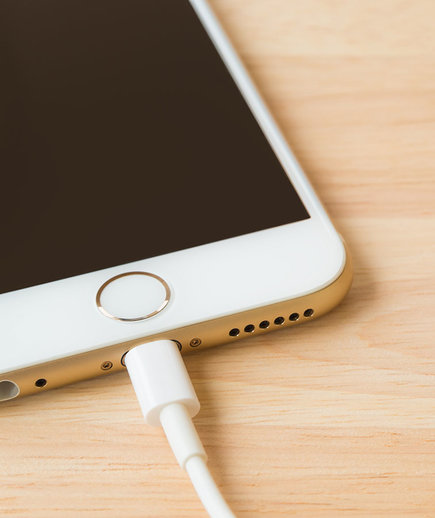
One of the most buzzworthy new features expected to debut on Apple’s long-awaited 10th anniversary iPhone (possibly called the iPhone 8 or iPhone X) is a technology that’s existed in consumer gadgets for years: wireless charging.
As appealing as the concept of charging your phone without those annoying cables may sound, the concept’s name is misleading. You still need to plug your charger into an outlet, then make sure your phone is within range of it. It’s that wireless charging eliminates the need to actually plug anything into the phone itself. Instead, you rest the device on a compatible charging mat or pad, making it possible to heft the device when needed without worrying about unplugging first.
Apple is one of the few smartphone makers yet to embrace wireless charging in its smartphones. Not because the technology is bleeding edge, either: it’s been an option for select mobile devices as far back as 2009’s Palm Pre. But while modern smartphones like Samsung’s Galaxy S8 and LG G6 support the technology, wireless charging is still far from ubiquitous—largely because it lacks industry standardization, making it difficult to create an experience that’s similar across all devices, as with technologies like Bluetooth and Wi-Fi.
But that could change if Apple brings wireless charging to iPhones. To understand how the new iPhone’s wireless charging might work, it’s important to note Apple’s current stance on the technology. Earlier this year Apple was listed as a member of the Wireless Power Consortium, an organization that develops industry standards, which many have interpreted as a sign that the next iPhone will support wireless charging.
The Wireless Power Consortium’s Qi standard works one of two ways: either through induction or resonant charging. Reports from Bloomberg and a recent Chinese leak point to induction, which is the same method the Apple Watch’s magnetic charger currently uses. Wireless chargers that power devices by way of induction contain magnets and coiled wires, which when electricity passes through them are able to provide a charge to nearby devices. For inductive charging to work, the device must be very close to the charger. This often means making direct contact with the charging mat, and the Wireless Power Consortium’s website says the transmitter and receiver coils are usually “only separated by the outer casing of the two devices.”
There’s also a chance Apple is experimenting with less constrained ways to wirelessly charge devices. The company is said to be working on technology that could power electronics over a distance so that users wouldn’t be forced to rest a device on a charging mat, according to an earlier report from Bloomberg. Apple has also filed patents outlining such technology in the past, and one such document points to a system that would use radio signals (such as those used by Wi-Fi) to wirelessly charge gadgets.
Whatever the case, it stands to reason that Apple’s approach to wireless charging will attempt to differentiate itself from the market’s current options. Apple has built its reputation more on improving existing technologies than being first to market with them.
The Apple Watch is a prime example of this. Google unveiled its software platform for wearables months before the Apple Watch debuted, while Pebble’s smartwatch shattered Kickstarter records in 2012. But Apple made the experience of using a smartwatch better by focusing on the user interface, adding a digital crown that made it possible to navigate the watch without having to fumble around the tiny touchscreen with a finger.
If Apple’s next-gen iPhone shapes up to be as radical as rumors suggest, its take on wireless charging will be just one of several idiosyncratic innovations designed to become buyer compulsions. In Apple’s mind, success isn’t limited to inventing unseen technology, but being the first company to convince buyers that they can’t live without it.
More Must-Reads From TIME
- What Student Photojournalists Saw at the Campus Protests
- How Far Trump Would Go
- Why Maternity Care Is Underpaid
- Saving Seconds Is Better Than Hours
- Welcome to the Golden Age of Ryan Gosling
- Scientists Are Finding Out Just How Toxic Your Stuff Is
- The 100 Most Influential People of 2024
- Want Weekly Recs on What to Watch, Read, and More? Sign Up for Worth Your Time
Contact us at letters@time.com